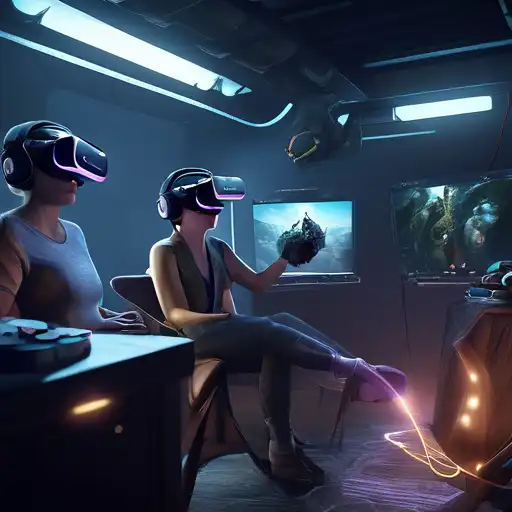Introduction to Virtual Reality
Virtual Reality (VR) has transformed the way we interact with digital content, offering unparalleled immersive experiences. From gaming to education, VR's applications are vast and varied. This guide delves into the essentials of creating captivating VR experiences that engage and astonish users.
Understanding VR Technology
At its core, VR technology simulates a three-dimensional environment that users can explore and interact with in a seemingly real or physical way. This is achieved through the use of VR headsets, motion tracking, and immersive audio. Understanding these components is crucial for any VR developer.
Designing for Immersion
Creating an immersive VR experience requires careful consideration of design elements. Here are key factors to consider:
- User Interface (UI): Ensure that the UI is intuitive and does not break the immersion.
- Environmental Design: The virtual environment should be rich and detailed to enhance realism.
- Interactivity: Allow users to interact with the environment in meaningful ways.
Technical Considerations
Developing VR content also involves technical challenges. High-performance graphics, low latency, and smooth frame rates are essential to prevent motion sickness and ensure a comfortable experience. Utilizing the right development tools and platforms, such as Unity or Unreal Engine, can significantly streamline the process.
Testing and Feedback
Before launching your VR experience, thorough testing is imperative. Gather feedback from a diverse group of users to identify any issues and areas for improvement. This iterative process helps refine the experience, making it more engaging and user-friendly.
Future of VR
The future of VR is bright, with advancements in technology paving the way for even more immersive and interactive experiences. As hardware becomes more accessible and software more sophisticated, the possibilities for VR are limitless.
For those interested in exploring more about VR technology, check out our VR Technology Basics guide.
Conclusion
Creating immersive VR experiences is both an art and a science. By focusing on design, technical excellence, and user feedback, developers can craft unforgettable virtual worlds. As VR continues to evolve, staying informed and adaptable is key to success in this exciting field.
